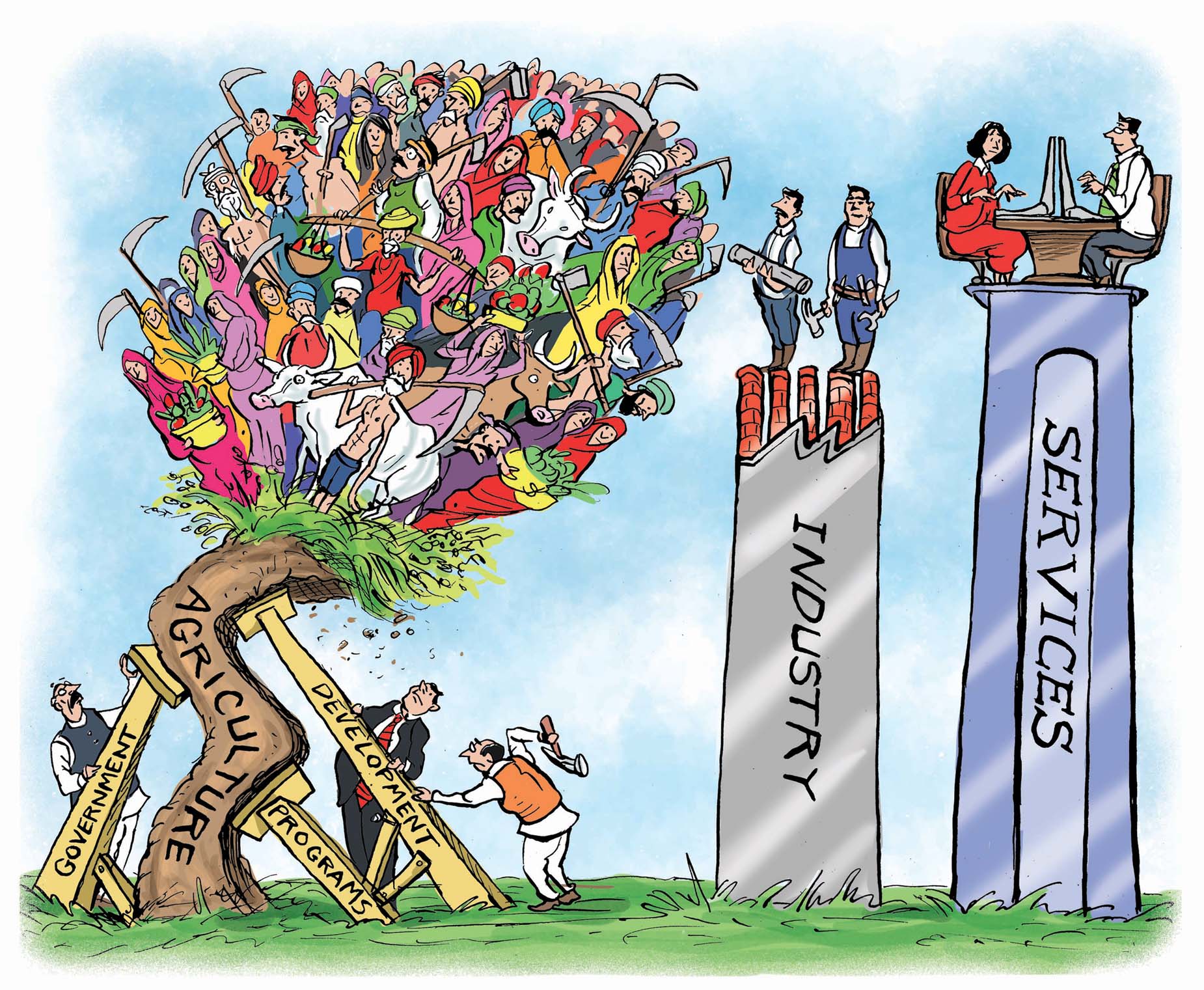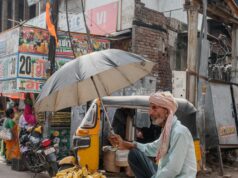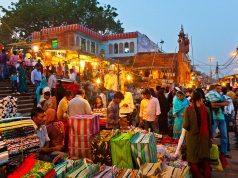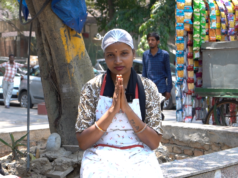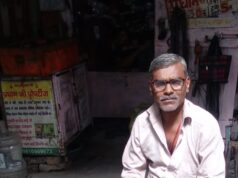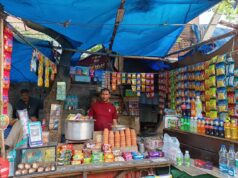Its 1950.
India, a newly independent country of 360mn1 is experimenting with democracy. Armed with a benevolent constitution, the nation’s leaders deliberate over ways of improving the lives of its citizens. They stumble upon Agriculture by no coincidence. Agriculture in India is the whole and soul of the country, contributing ~50% to the Gross Domestic Product (GDP) and employing more than 80% of the population.
Naturally, policies oriented towards uplifting farmers are a good way to uplift the nation from poverty. It is, as they say in business lingo, the low hanging fruit as far as improving the lives of the majority goes. In the decades that follow, government after government ideates, deliberates and executes policies for farmer welfare. Lowly but, steadily, India rises from being a country struck by famine regularly to a country self-sufficient in food.
Fast forward to 2019.
Agriculture contributes <20% of GDP2 and employs ~40% of the population4. That raises the question, is agriculture any less important now?
Yes and No.
Yes because, in number terms, a sizeable chunk of the population doesn’t directly rely on the farmlands anymore. Thus, subsidies on food grains and fertilizers (INR 2,400 billion in 2018)5 are no longer as efficient or ‘low hanging’ as they used to be.
No, because, at the end of the day, a nation needs to grow its own food and the conditions of marginal farmers and landless laborers need improvement.
So what must change?
Acknowledging the above, a change of perspective towards agriculture policies is pertinent. Incremental changes in policies, as have been going on for the past few decades, are no longer enough or efficient. There is a need for developing a new outlook which isolates welfare of majority from agricultural subsidies.
How is it today?
There are, broadly speaking, 2 types of agricultural activities that take place in India:
- Subsistence farming:
Farming today is rarely seen as a lucrative profession by the average Indian youth. Most marginal farmers carry out subsistence farming i.e. produce just enough for their family’s survival and rarely for trading. They are least likely to employ modern methods of farming and most likely to be heavily dependent on monsoon. The land under cultivation is also likely to be not well-irrigated or arable.
2. Commercial farming:
Commercial farming is typically done by farmers owning large lands, corporates/ cooperatives leasing lands from a group of farmers on a contract and corporates farming on lands leased out by state governments (the last one is prevalent only in some states of India). It contributes to the bulk volumes of yields sold in the markets that impact Indian economy. There is a high usage of fertilizers, pesticides and insecticides to improve yields. Wheat, rice and other major crops are grown in this fashion. One may also consider plantation farming in this category which includes fruits, rubber, coffee, sugarcane etc.
The following observations and deductions can be made from this:
- Subsistence farming is likely an occupation for an individual without better alternatives for a sustained income.
- This implies that in the event of a better alternative being available, the farmer is less likely to continue doing it. This implication may be observed in the mass migration from rural areas to urban areas.
- It also implies that the farmers who are continuing to farm for subsistence are likely to be poor and in most need of help from the government.
- While government subsidies on farming inputs like seeds, fertilizers, MSPs, government procurement machinery, crop insurance do help marginal farmers out to some extent, it is a very indirect way of doing so. The direct transfer scheme recently announced by the government may prove to be more fruitful as it grants regular cash flow to the most vulnerable section. However, the implementation and its likely impact on our nation’s fiscals remain to be seen.
So, what needs to be done?
India needs to welcome its entrepreneurs into agriculture. It needs to set up a market place and regulatory mechanism to allow anyone willing to start an agricultural business (food grain/ commercial crops) to do so easily. This means cutting the red tape, reforming land ownership and labor laws and allowing easier credit.
Drastic? What about the marginal farmers, landless laborers, non-agribusinesses dependent directly or indirectly on farming? This is surely a recipe for tremendous injustice and exploitation of the farmer, isn’t it?
Well, no. The devil is in the details or rather in this case, the virtues of this scheme are in the details.
The idea would be to rent farms or any other lands (rather than selling them) from landowners through a local cooperative society which would be paid rental income by the entrepreneurs using the lands again at the discretion of the farm owners. The government/ NGOs could help the cooperative with the legal and commercial setup. A separate tribunal to resolve legal conflicts could be setup to fast track any disputes. A cooperative thus formed with local representation would give better leverage to the farmers as against individually renting out land and lay out their own conditions regarding usage of local labor thus benefiting the landless laborers. Also productive farm lands kept unused could be brought under utilization providing the farmers and laborers with market driven rental income and wages respectively.
The local cooperatives could rent out the rights to doing non-farming businesses like animal husbandry on non-farmlands (grasslands) in a similar fashion to a willing corporate or entrepreneur.
But this is easier said than done. How could this proposal be executed?
Stay tuned to understand the implementation road-map and the possible challenges to the proposition.
Read more: https://spontaneousorder.in/so-musings-economic-freedom-for-farmers/
Post Disclaimer
The opinions expressed in this essay are those of the authors. They do not purport to reflect the opinions or views of CCS.

